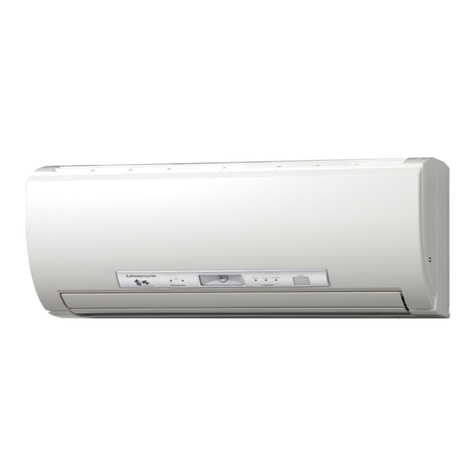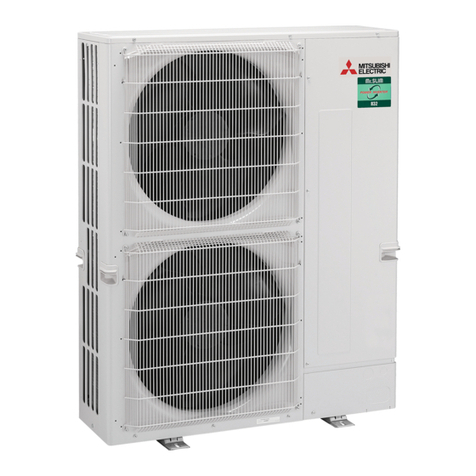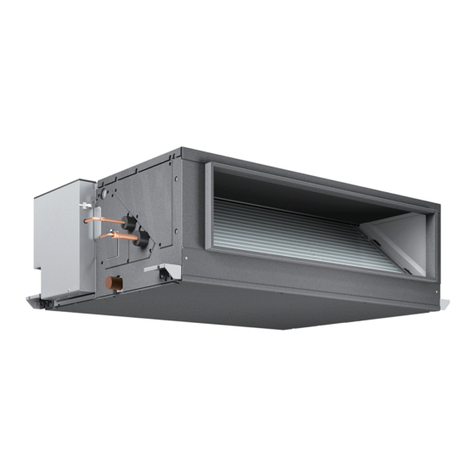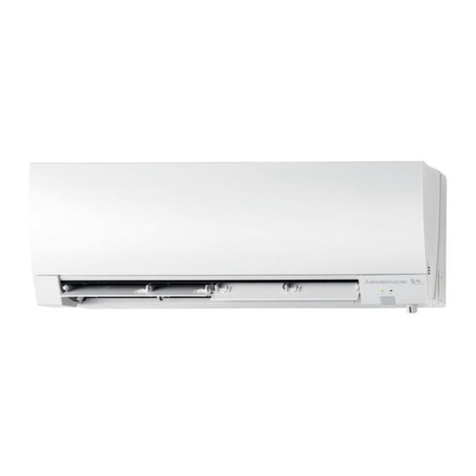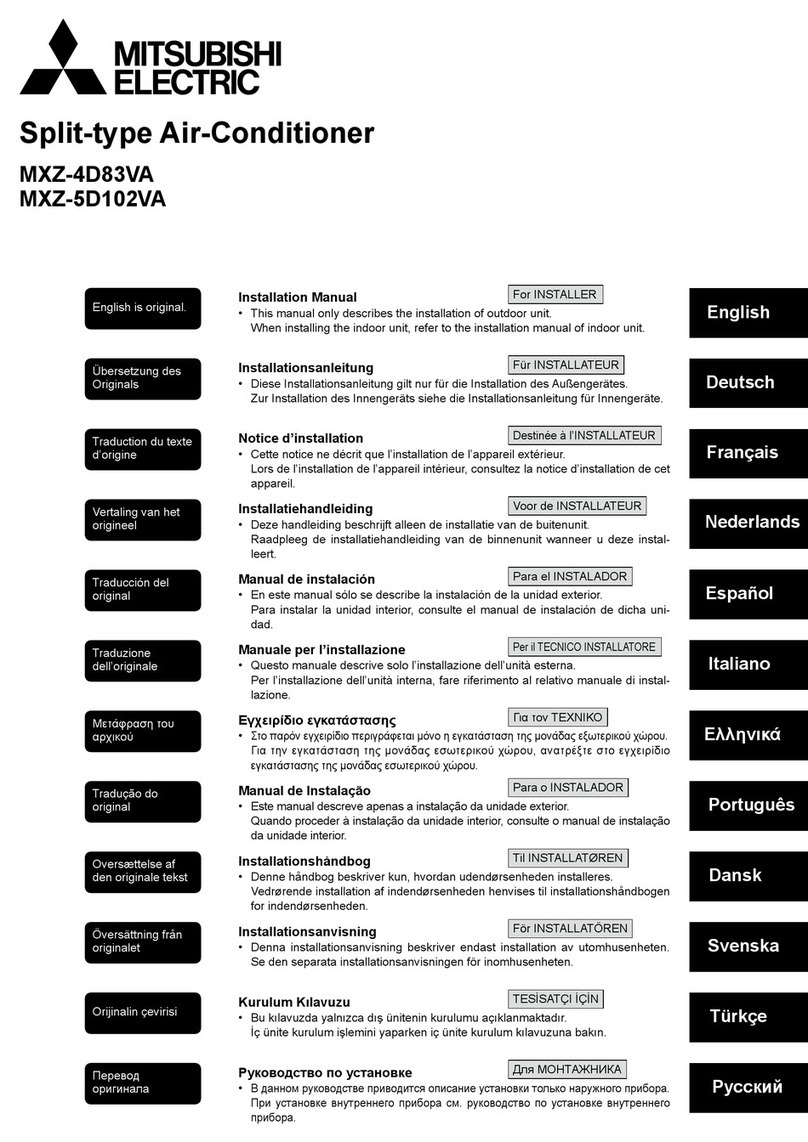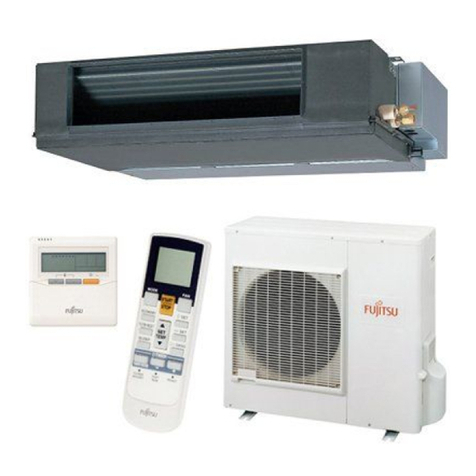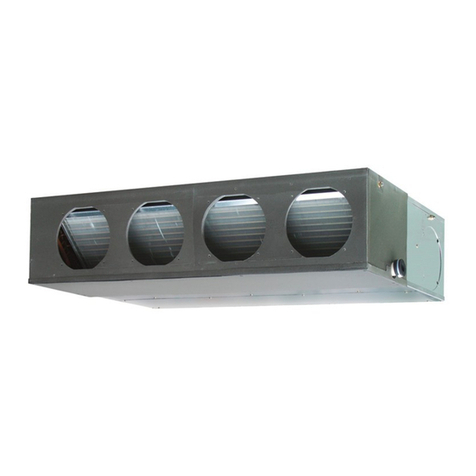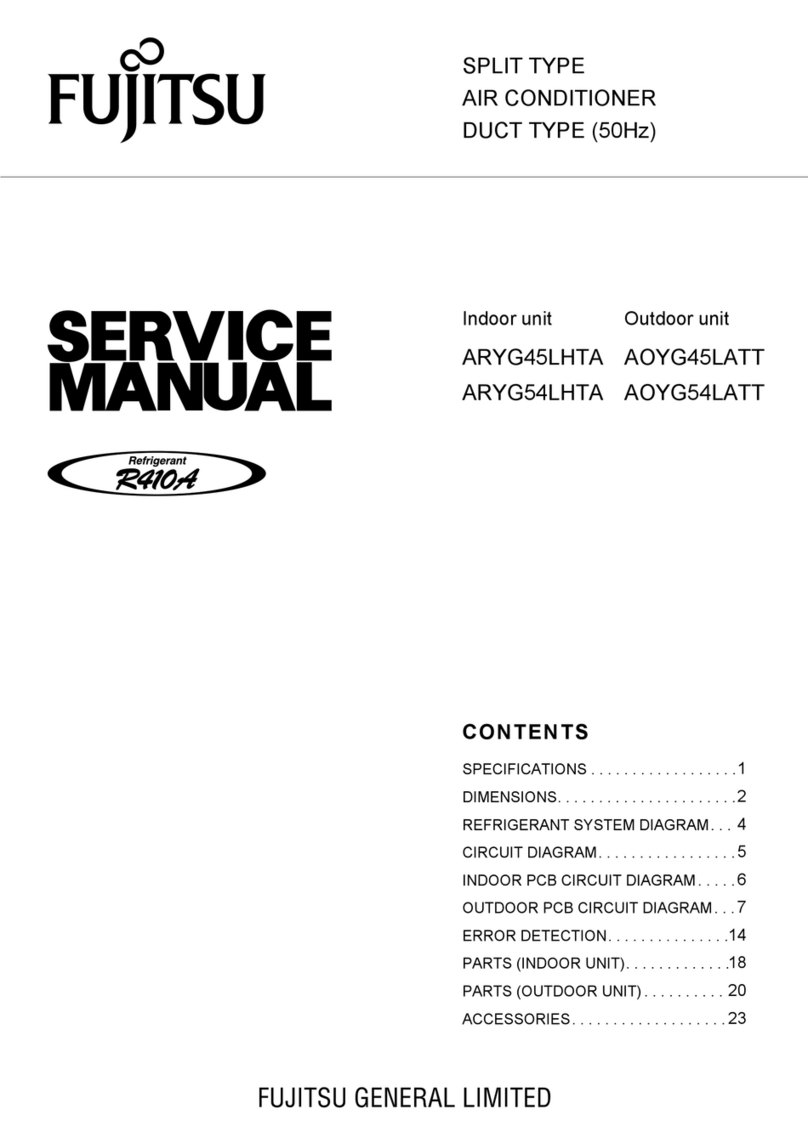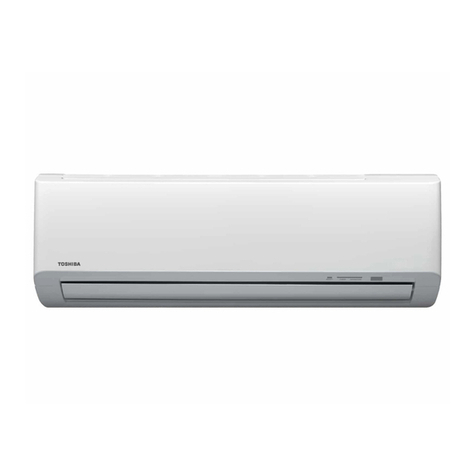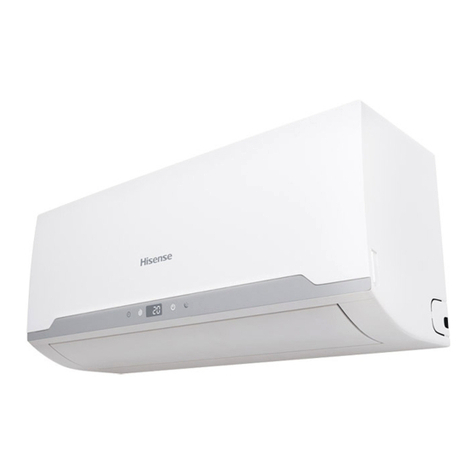
2
When the air Þlter is to be removed, do not touch the metal part of the indoor unit.
• This may cause an injury.
Do not touch the air inlet or aluminum Þn of the outdoor unit.
• This may cause an injury.
Do not put a vase or glass on the indoor unit.
• Water dropping into the indoor unit may deteriorate the insulation, causing electric shock.
Do not use an insecticide or ßammable spray.
• This may cause a Þre or deformation of the cabinet.
Do not put a pet or houseplant where it will be exposed to direct airßow.
• This could injure the pet or plant.
Do not place other electric appliances or furniture under the indoor/outdoor unit.
• Water may drip down from the unit, and this may cause damage or malfunction to them.
Do not leave the unit on an installation stand which is damaged.
• The unit may fall and this may cause an injury.
Do not step onto an unstable bench when maintaining the unit, etc.
• This may cause an injury, etc., if you fall down.
Do not pull the power supply cord.
• The core wire of the power supply cord may be disconnected and this may cause a Þre.
Do not charge or disassemble the batteries and do not throw them into a Þre.
• This may result in leakage, Þre or an explosion.
Do not operate the unit for a long time in high humidity, e.g. leaving a door or window open.
• In the cooling mode, if the unit is operated in a room with high humidity (80% RH or more) for a long time,
water condensed in the air conditioner may drop and wet or damage furniture, etc.
Do not use intermediate connection of the power supply cord or the extension cord and do not connect
many devices to one AC outlet.
• A Þre or an electric shock may result from poor contact, poor insulation, exceeding the permissible
current, etc.
Remove dirt from the power supply plug and securely insert the plug into the outlet.
• If dirt adheres to the plug or insertion is incomplete, it may cause a Þre or an electric shock.
Do not scratch or process the power supply cord, etc.
• Do not put heavy object on the power supply cord and do not scratch or process the cord. The cord may
be damaged and this may cause a Þre or an electric shock.
Do not turn the breaker off/on and/or disconnect/connect the power supply plug during operation.
• This may cause a Þre due to spark, etc.
• Be sure to turn off the breaker and/or disconnect the power supply plug absolutely after switching the indoor
unit off with the remote controller.
Do not expose your skin directly to cool air for a long time.
• This could damage your health.
Installation, repairs or relocation should not be done by the customer.
• If this is done incorrectly, it may cause a Þre, an electric shock, or injury from the unit falling, water
leaking, etc. Consult your dealer.
• If the power supply cord is damaged, it must be replaced by the manufacturer or its service agent in order
to avoid a hazard.
Do not insert your Þnger or a stick, etc. into the air inlet/outlet.
• Since the fan rotates at high speed, this may cause an injury.
• Young children should be supervised to ensure that they do not play with the air conditioner.
When an abnormality (burning smell, etc.) occurs, stop the air conditioner and disconnect the
power supply plug and/or turn off the breaker.
• If the unit continues to be operated in an abnormal condition, it may cause a Þre, trouble, etc. In this case,
consult your dealer.
SAFETY PRECAUTIONS .......................................................................................................................................................... 2
NAME OF EACH PART ............................................................................................................................................................. 3
PREPARATION BEFORE OPERATION ................................................................................................................................... 4
AUTO CHANGEOVER... AUTO MODE OPERATION .............................................................................................................. 6
MANUAL OPERATION (COOL, DRY, HEAT) ............................................................................................................................ 7
AIR FLOW VELOCITY AND DIRECTION ADJUSTMENT ......................................................................................................... 7
ECONO COOL OPERATION ..................................................................................................................................................... 9
TIMER OPERATION (ON/OFF TIMER) ....................................................................................................................................9
WHEN THE AIR CONDITIONER IS NOT GOING TO BE USED FOR A LONG TIME .............................................................9
MAINTENANCE ........................................................................................................................................................................ 9
CLEANING THE FRONT PANEL, HEAT EXCHANGER AND FAN ......................................................................................... 10
CLEANING THE AIR FILTER (CATECHIN) ............................................................................................................................. 10
CLEANING THE AIR CLEANING FILTER (OPTION) .............................................................................................................. 11
REPLACEMENT OF THE AIR CLEANING FILTER (OPTION) ................................................................................................ 11
CLEANING THE AIR OUTLET AND FAN OF THE INDOOR UNIT..........................................................................................12
BEFORE CONTACTING THE SERVICE REPRESENTATIVE, CHECK THE FOLLOWING AGAIN .......................................13
WHEN YOU THINK THAT TROUBLE HAS OCCURRED ........................................................................................................ 13
INSTALLATION, RELOCATION AND INSPECTION ............................................................................................................... 14
SPECIFICATIONS.................................................................................................................................................................... 14
WEEE..................................................................................................................................................................................... 157
CONTENTS
SAFETY PRECAUTIONS
• Since rotating parts and parts which could cause an electric shock are used in this product, be sure to read
these “Safety Precautions” before use.
• Since the cautionary items shown here are important for safety, be sure to observe them.
WARNING: Incorrect handling could cause a serious hazard, such as death, serious injury, etc. with a high
probability.
CAUTION: Incorrect handling could cause a serious hazard depending on the conditions.
Marks and their meanings
Meanings of symbols used in this manual
: Be sure not to do.
: Be sure to follow the instruction.
: Never insert your Þnger or stick, etc.
: Never step onto the indoor/outdoor unit and do not put anything on them.
: Danger of electric shock. Be careful.
: Be sure to disconnect the power supply plug from the power outlet.
: Be sure to shut off the power.
• After reading this manual, keep it together with the installation manual in a handy place for easy reference.
ENCLOSURE
Warning positions
AIR OUTLET
FRONT PANEL
ENCLOSURE
• This air conditioner is NOT intended for use by children or inÞrm persons without supervisions.
WARNING
CAUTION

